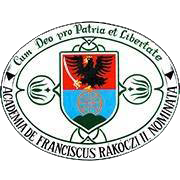Please use this identifier to cite or link to this item:
https://dspace.kmf.uz.ua/jspui/handle/123456789/3310| Title: | Military supplies and the population at the beginning of the Rákóczi war of independence (1703–1704) |
| Other Titles: | Постачання армії та населення на початку визвольної війни під проводом Ференца Ракоці II (1703–1704) |
| Authors: | Yurii Chotari Чотарі Юрій Csatáry György |
| Keywords: | Kuruc army;Rákóczi’s decrees;military supply;counties;castle siege;public tax |
| Issue Date: | 2022 |
| Publisher: | Інститут українознавства ім. І. Крип’якевича НАН України |
| Type: | dc.type.researchStudy |
| Citation: | In Україна: культурна спадщина, національна свідомість, державність. 2022. Випуск 35. c. 25-38. |
| Series/Report no.: | ;Випуск 35. |
| Abstract: | Abstract. The article highlights that in the fi rst two years of Rákóczi’s War of Independence, the problems of military supply arose, in the solution of which the Prince was also strongly involved. In his decrees, he ordered the leading offi cials and war commissioners of the county to ensure the continuous supply of the troops, because the soldiers fi ghting for the independence of their country could not and should not suff er shortages at the front. Feeding the Kuruc army and supplying the cavalry troops, which were indispensable in the battles of the time, was a burden on the shoulders of the common population during the years of warfare. The eff orts of the population for the benefi t of the homeland were a great burden for the people, as the imperial and rebel armies sometimes tried to provide food from the same area. In the fi rst years of the War of Independence, the present-day Transcarpathian region ensured the supply of food and forage to the troops besieging the region’s fortresses (Mukachevo, Uzhhorod, Satu Mare). As the siege of Satu Mare, for example, lasted nearly a year and a half, the Hungarian state administration, which was gradually being built up in Rákóczi’s state, solved this multifaceted task through military commissioners. Without this background work, it would not have been possible to maintain the positions built up and there would have been no chance of occupying the militarily signifi cant fortifi cations. It is known that in addition to the Hungarians, there was a signifi cant Ruthenian and Romanian-speaking population in this area, who also contributed to the supply of Rákóczi’s troops. Through the decrees of Ferenc Rákóczi II, which can be found in the State Archives of the Transcarpathian Region, he organized the supply of the army, created tax districts, where the procedure for the levies and the payments were clearly established. The «Transcarpathian» counties (Uzh, Ugocha, Bereg, Maramuresh) were under the jurisdiction of the military commissioner György Orosz, who did his utmost to provide food and forage for the Kuruc army, which fought with varying success. Finally, the number of soldiers of the Kurucs who were sent to the various battlefi elds of the War of Independence from the territory of present-day Transcarpathia and the number of soldiers that our region was able to supply in proportion to the number of soldiers will be pointed out. The study explores the details of the cooperation between the military and the population, using archival sources. Резюме. Висвітлено питання, пов’язані зі забезпеченням війська під час визвольної війни під проводом Ференца Ракоці ІІ, у вирішенні яких він особисто брав активну участь – власними розпорядженнями наказав головним чиновникам комітатів і своїм комісарам забезпечити військо харчами. Методологічною основою став комплексний підхід до аналізу архівних джерел, на основі яких висвітлено співпрацю населення та війська під час боїв. Простежено, що харчування військових куруців і забезпечення кавалерії, яка була незамінною в тогочасних боях, протягом багаторічної війни лягло на плечі звичайного населення. Акцентовано, що зусилля населення для блага батьківщини стали для народу важким тягарем, оскільки й імператорські війська, і повстанці часто намагалися забезпечити провіант із тої самої території. З’ясовано, що землі сучасної Закарпатської обл. забезпечували в перші роки визвольної війни постачання харчами і кормом загони, які штурмували розташовані у краї замки (Мукачево, Ужгород, Сату-Маре). Встановлено, що оскільки, наприклад, облога Сату-Маре тривала майже півтора року, це складне завдання вирішували через військових комісарів. Констатовано, що без цієї тилової роботи було б неможливо утримувати новостворені військові табори й навіть не було шансу зайняти важливі з військового погляду фортеці. |
| URI: | https://dspace.kmf.uz.ua/jspui/handle/123456789/3310 |
| ISSN: | 2223-1196 |
| metadata.dc.rights.uri: | http://creativecommons.org/licenses/by-nc-nd/3.0/us/ |
| Appears in Collections: | Csatáry György |
Files in This Item:
| File | Description | Size | Format | |
|---|---|---|---|---|
| Csatary_Gy_Military_supplies_and_the_population_at_the_beginning_of_the_Rakoczi_2022.pdf | In Україна: культурна спадщина, національна свідомість, державність. 2022. Випуск 35. c. 25-38. | 202.89 kB | Adobe PDF | View/Open |
This item is licensed under a Creative Commons License





